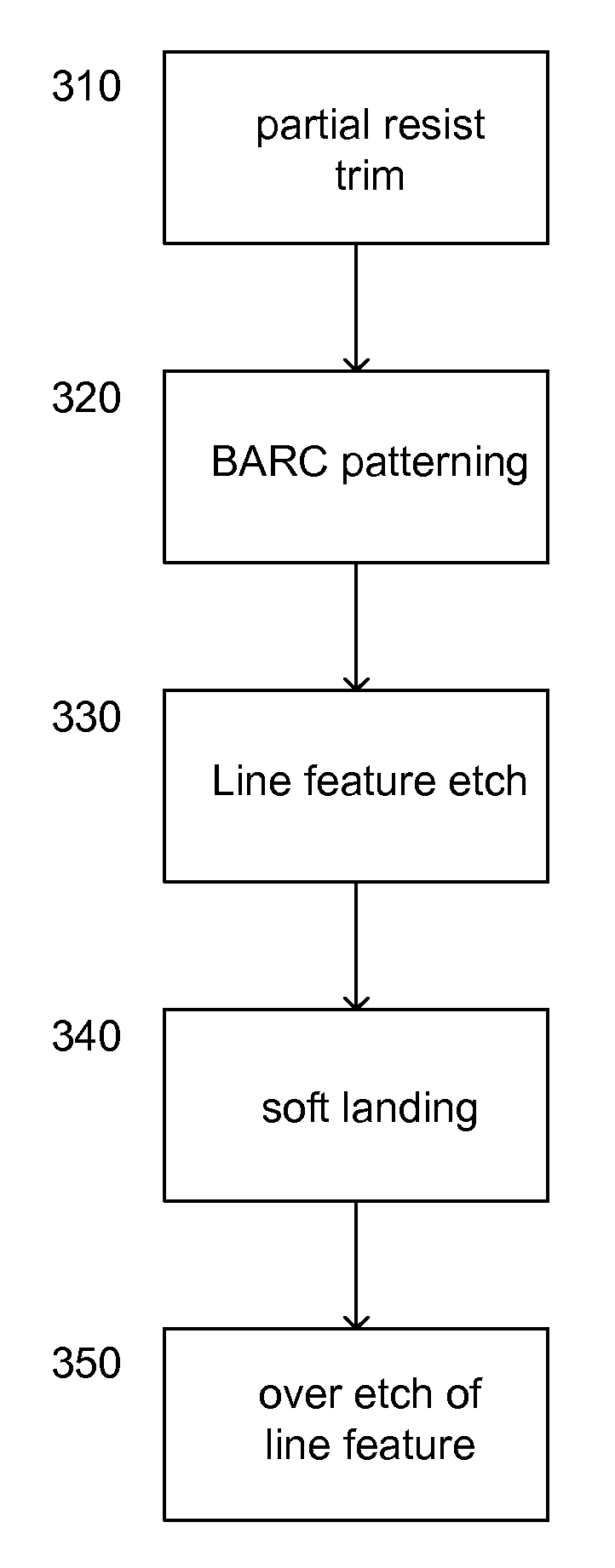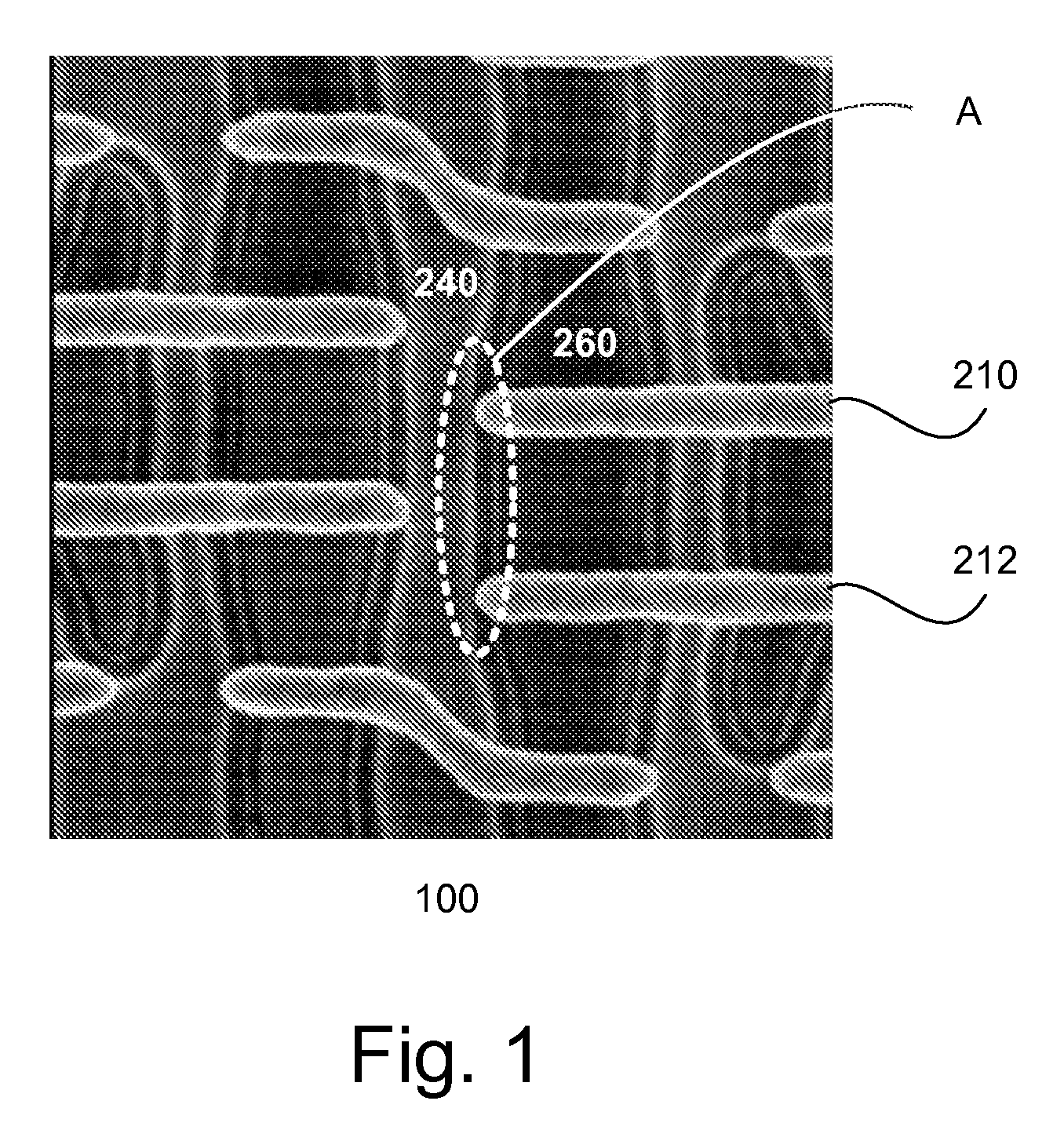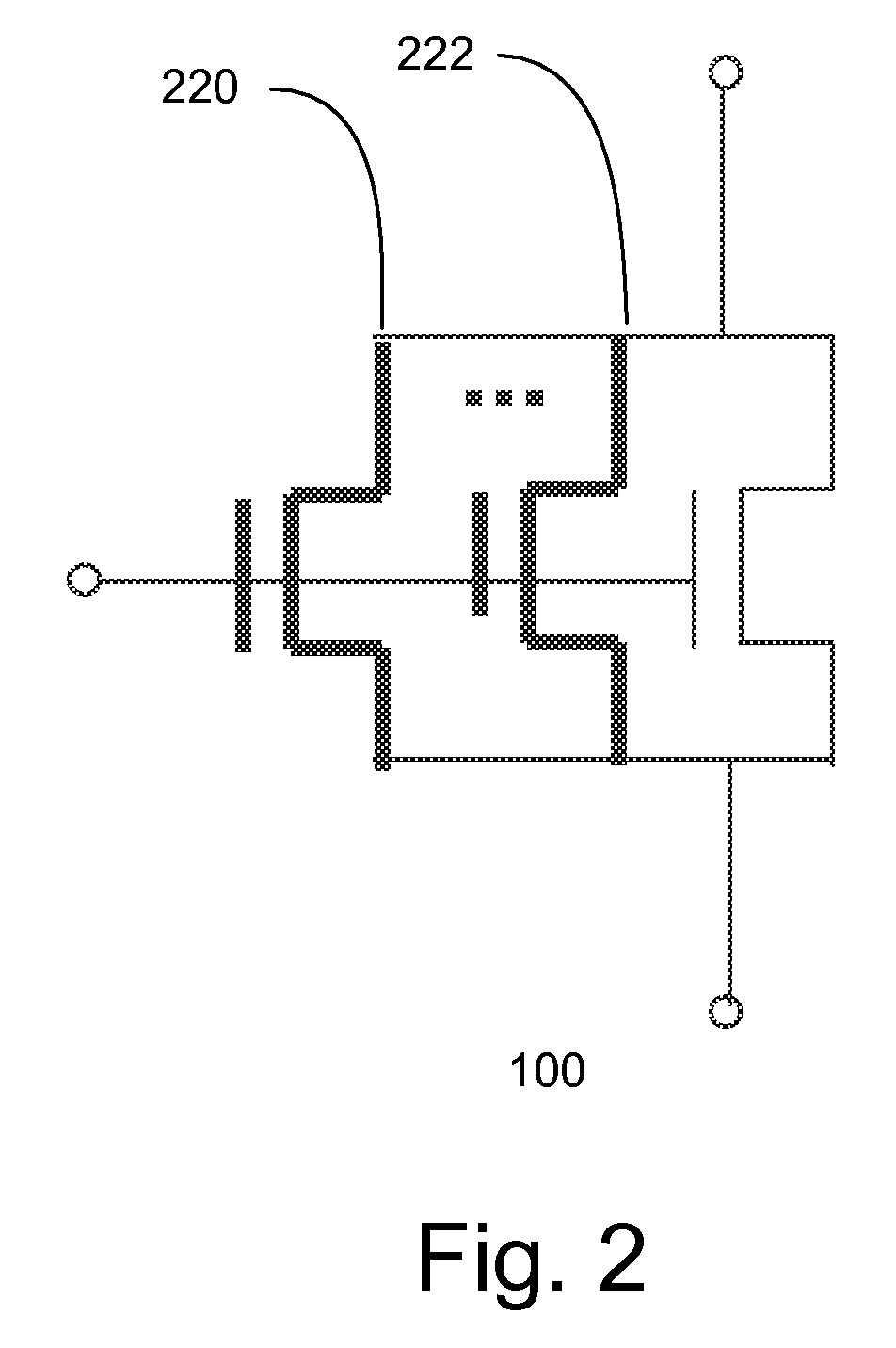Processing with Reduced Line End Shortening Ratio
- Summary
- Abstract
- Description
- Claims
- Application Information
AI Technical Summary
Benefits of technology
Problems solved by technology
Method used
Image
Examples
Embodiment Construction
[0010]The present invention relates to semiconductor processing. More particularly, the present invention provides a process for forming patterned line features with reduced line end shortening. In one embodiment, the line feature comprises polysilicon lines which serve, for example, as gate conductors. Forming other types of line features is also contemplated and within the scope of the invention, particularly where low LES ratio is desirable.
[0011]In accordance with one embodiment of the invention, forming a line feature with sub-ground rule dimensions can be achieved as part of the etch that forms the line feature. The etch can include an initial etch with appropriate etch chemistry which substantially produces the feature based on a patterned resist mask and an over-etch to complete the patterning of the feature, wherein the initial etch uses an appropriate etch chemistry to trim the line feature to desired dimensions. By trimming the line feature as part of the etch that forms ...
PUM
 Login to View More
Login to View More Abstract
Description
Claims
Application Information
 Login to View More
Login to View More - R&D
- Intellectual Property
- Life Sciences
- Materials
- Tech Scout
- Unparalleled Data Quality
- Higher Quality Content
- 60% Fewer Hallucinations
Browse by: Latest US Patents, China's latest patents, Technical Efficacy Thesaurus, Application Domain, Technology Topic, Popular Technical Reports.
© 2025 PatSnap. All rights reserved.Legal|Privacy policy|Modern Slavery Act Transparency Statement|Sitemap|About US| Contact US: help@patsnap.com



